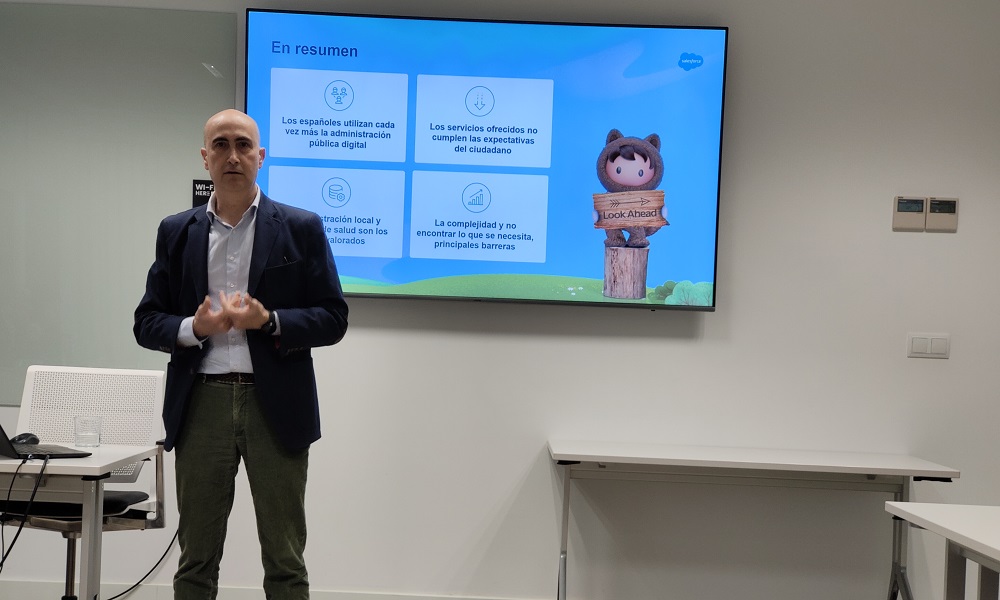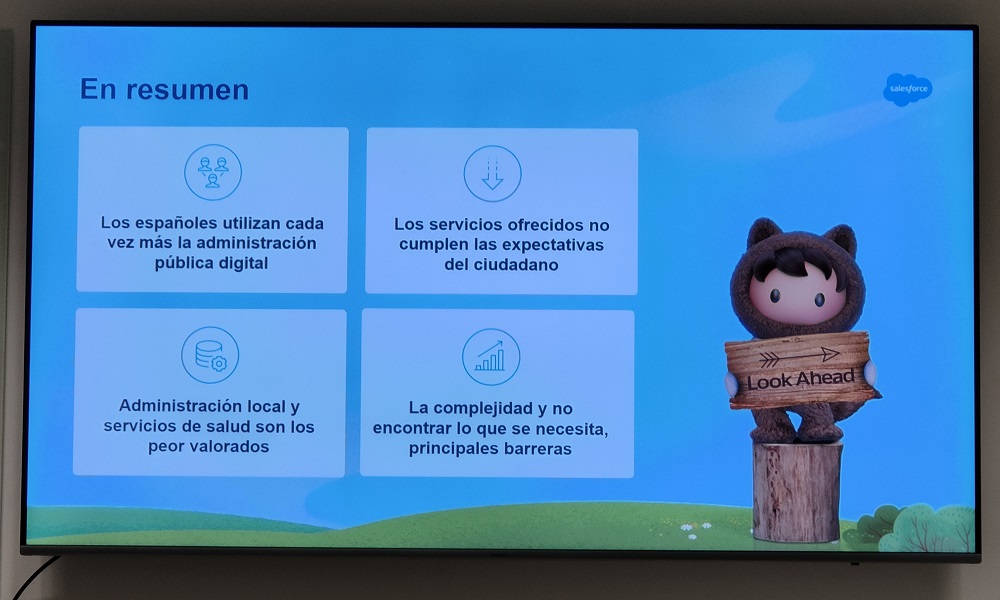
There is still a lot to do in the digitization of the Administration services. This is one of the conclusions of the study carried out by Censuswide to Salesforce. Jesus Galindovice president of the company’s Public Sector area, was in charge of presenting the results this morning to the media.
According to said study, just over half of the population (54%) indicate having used some type of digital service from the public administration, of which 29% feel that digital public services are of quality. In contrast, 35% affirm that the digital services offered by the public administration are too complicated and almost 9% state that you don’t know how to find what you need. The age group between 45 and 54 years old are the ones that have used these services the most (68%)
Besides, local government and health services These are the worst valued services by those surveyed. Specifically, the first is the one with the most room for improvement (40%), followed closely by the regional and central governments, both with 36%. Regarding the age groups, those between 25 and 34 years of age have the best opinion of the digital public administration (32%) but still below those who think that the procedures are too complicated (35%). Those over 55 they are the ones who have the worst opinion of digital services in the administration with 40%, stating that the procedures are very complicated.
Regarding these data, Galindo has indicated: “Citizens have become accustomed to the immediacy and efficiency of private companies through any channel and are looking for the same when carrying out their procedures with the administration. ??Digitization is fundamental to our economic recovery. It is key to the survival of many companies and vital to maintaining quality public services”.
Areas for improvement in digital public administration
The report specifically asked about the areas of health, tax agency and education to know the opinion of the population about the digitization of each one of them. According to the results, citizens consider that the area that needs the most improvement is health (62%), followed by the tax agency (54%) and education (47%). In this case, the age ranges stand out and the group between 16 and 24 have chosen education as the area in which they would like to see the greatest improvements with 58%, followed by health with 55%. On the other hand, the group between 45 and 54 chose the tax agency as the area with the greatest margin for improvement with 65% followed by health with 63%.
Regarding the services that users would improve from the digital public administration, simplifying the processes to find the information that is needed is the most mentioned with 46%. In fact, when asked about what they would like to be able to do in a simpler, faster and safer way in their dealings with the administration, the participants mentioned as the first option locating and downloading documents (52%) followed by scheduling appointments for procedures (50%) and having everything in a single virtual space (44%)
A relevant fact is also the need for ubiquity of services since 20% of responses are associated with the need to offer services on different platforms. Regarding the devices with which they carry out the procedures, citizens mainly use the mobile phone (49%) and the computer (44%) to carry out these procedures. “The future of the Public Sector is multichannel, with priority for mobile devices. As in the private sector, the possibility of offering connected digital experiences, the unification of channels and the guarantee of workflow in all organizations of the public administration are priority issuess”, confirms Jesús Galindo.
Trust in data processing
Regarding the treatment of personal data by the administration, citizens are willing to share more data and be more open. The effective use of your data is essential to create a personalized experience, but also to gain trust. According to study resultscitizens trust the security of public digital services and the management and privacy of their personal data endorsed by 77% of the study participants. Only 3% say they do not perceive that the services are safe.
However, the risk of cyberattacks against the public administration is indeed a concern for 66% of the study participants, although only 24% state they feel “high concern”. On the contrary, 3.5% of the participants stated that they did not feel at all worried about this threat.
Extremadura leads the ranking of the best regional public administration
Analyzing by autonomous communities the degree of satisfaction of the population with their regional administrations, the state average is 29% of positive responses regarding the quality of digital public services. The podium would be made up of Estremadura, which leads the ranking with 42% of positive responses, followed by Andalusia with 37% and the Principality of Asturias with 31%. The Community of Madrid with 28% and Catalonia with 29% are at the national average while other regions such as the Valencian Community are slightly above with 30% and Euskadi, for example, is slightly below with 27%.
On the opposite side, we found La Rioja with the worst valued services due to their complexity with up to 63% of the population stating that the digital services of their regional administration are very complicated. In second place we find Cantabria with 46% of responses in this regard and, closing the podium, we have a triple tie between Galicia, Catalonia and Aragon with 42% of the population demanding improvements in the public services of their regional administrations.




